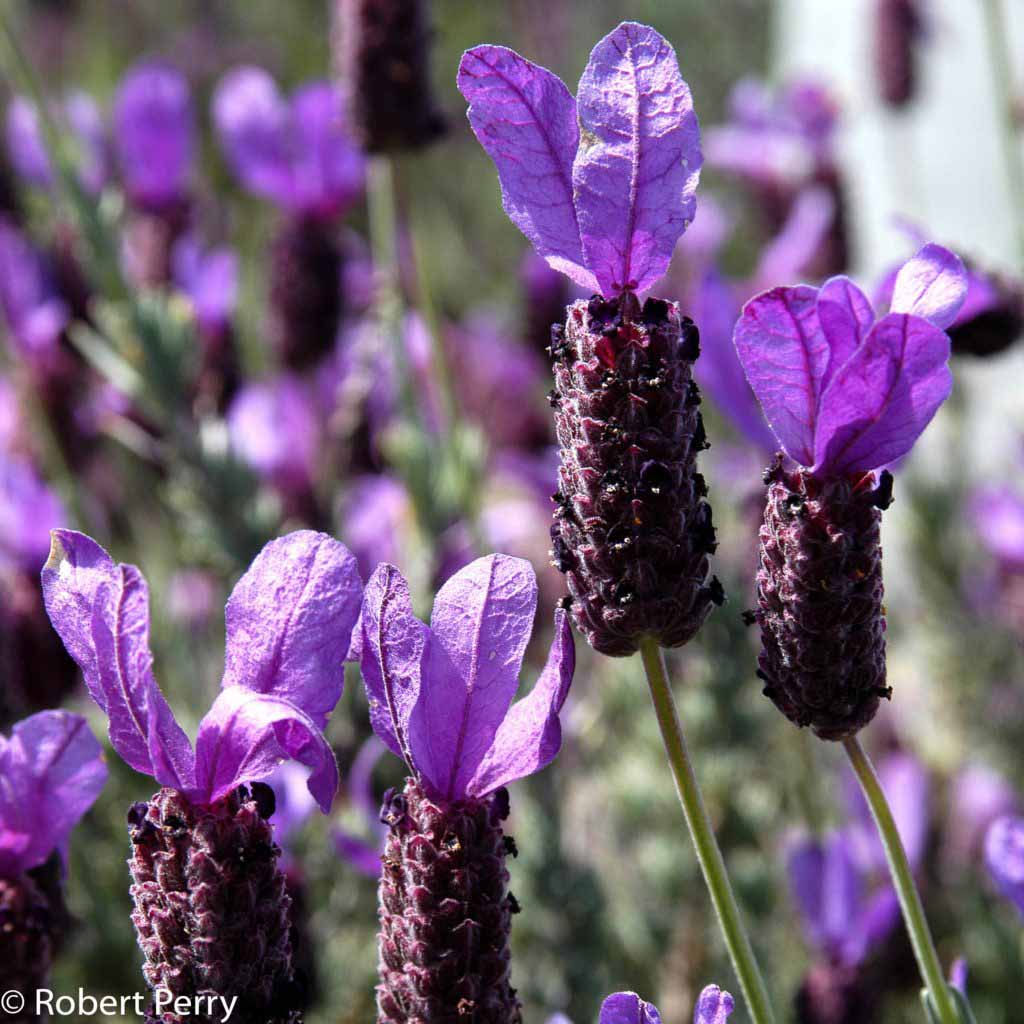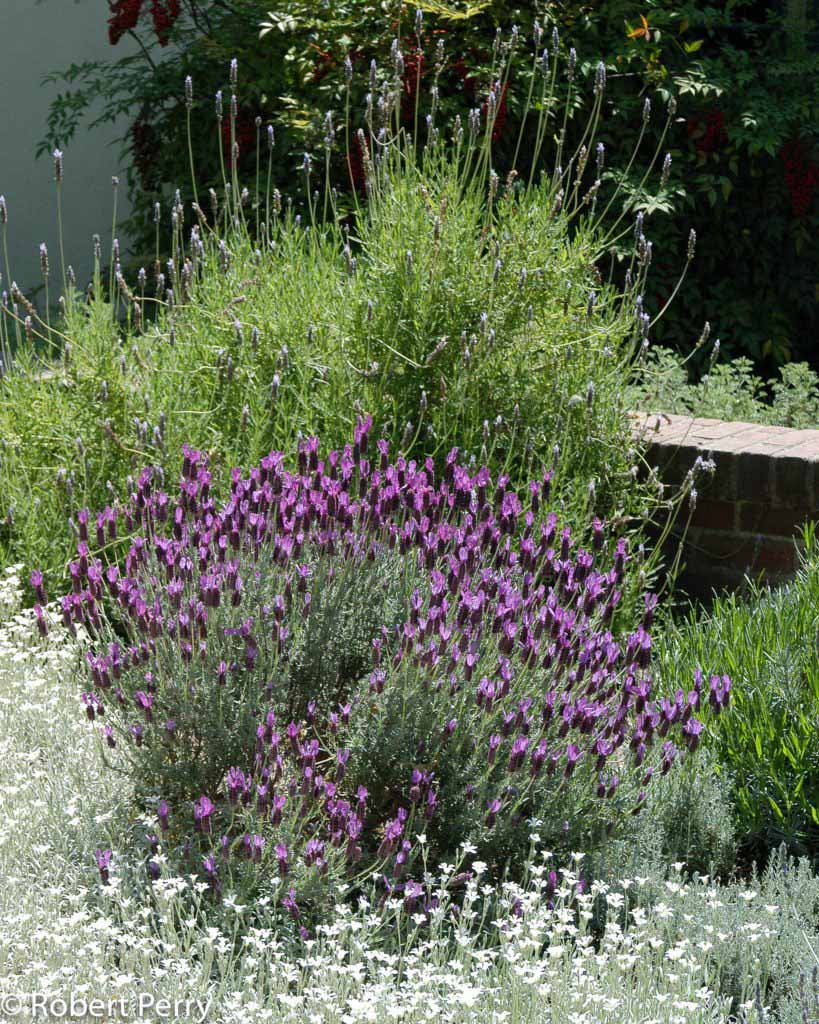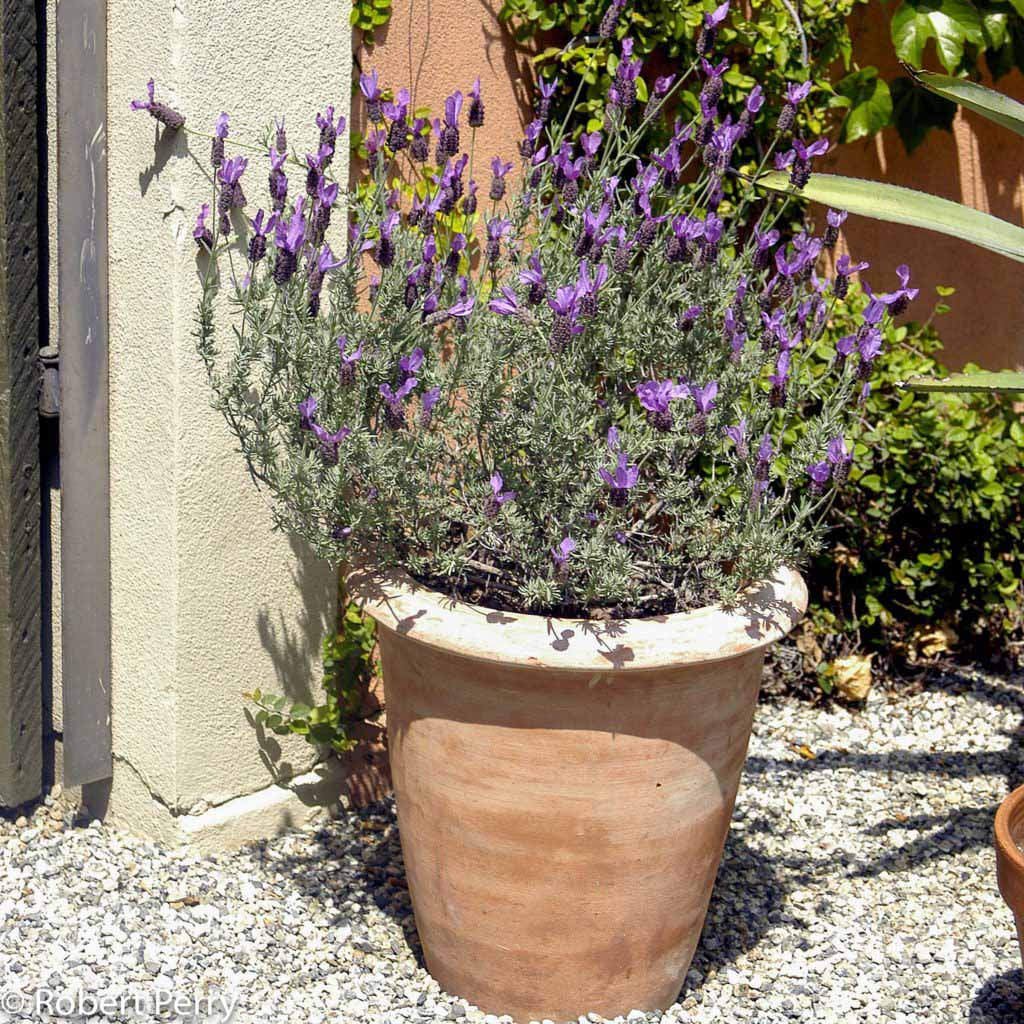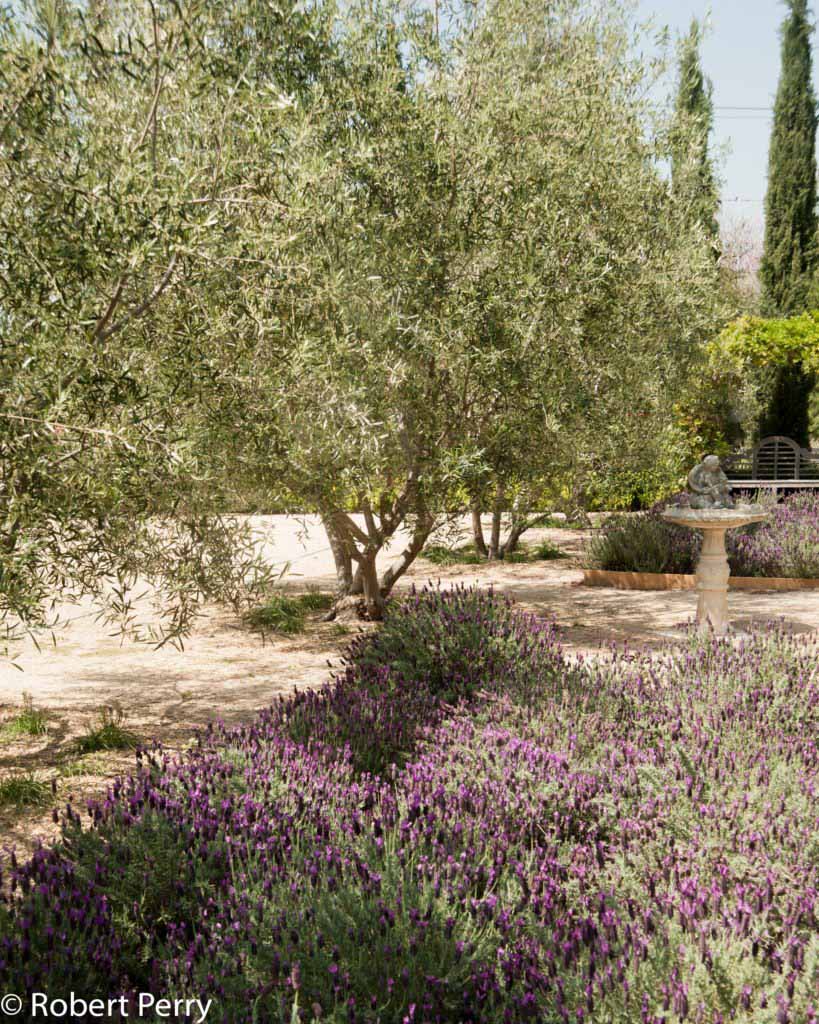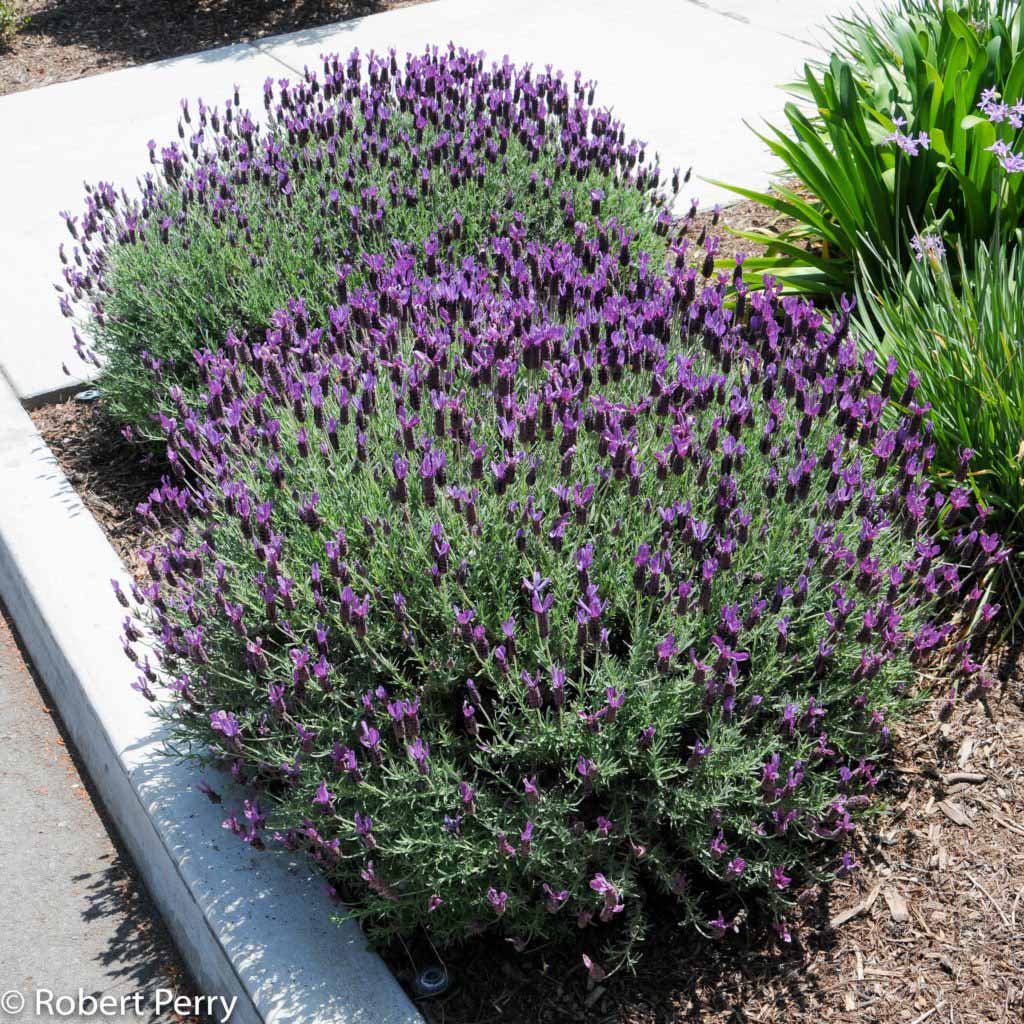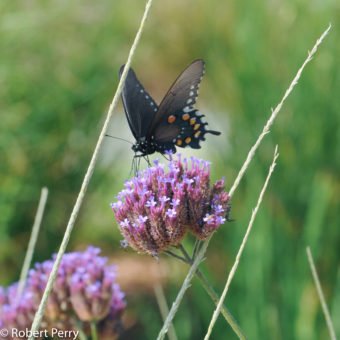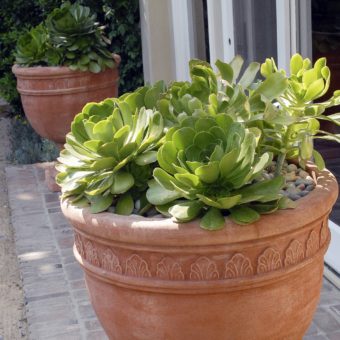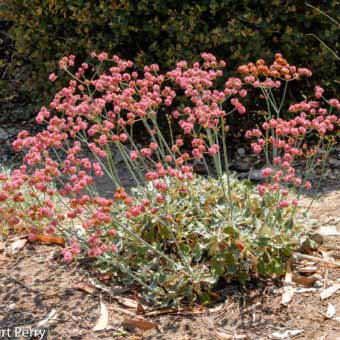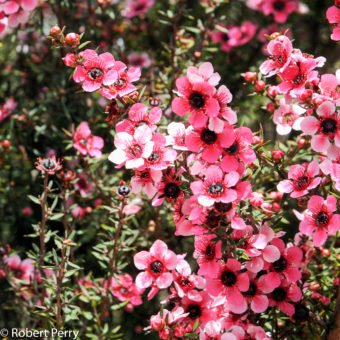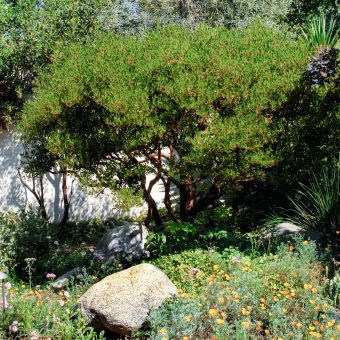The Spanish lavender is the most colorful of the garden lavenders. It grows as a rounded shrub 24-30 in. high, and 2-3 ft. wide. Foliage is comprised of small linear gray-green leaves; flowers spikes feature several large and showy intense purple bracts, and occur on stems extending 4-6 in. above the foliage in early spring.
Spanish lavender comes from warm and dry areas of Spain, Portugal and North Africa where it grows on shallow non-calcareous soils. This species produces the most unique and striking flower character of the lavenders by developing large purple bracts that grow out of the top of its flower heads. Over a dozen cultivars are available from local nurseries and garden centers with pink, purple and white flower colors.
Spanish lavender is a very colorful plant for use in mixed perennial gardens, in mass groupings and in containers. Like other lavenders, it grows well in sunny locations, in well-drained soils and with low to moderate amounts of moisture during summer. It shows tolerance of temperatures to 15°F.
